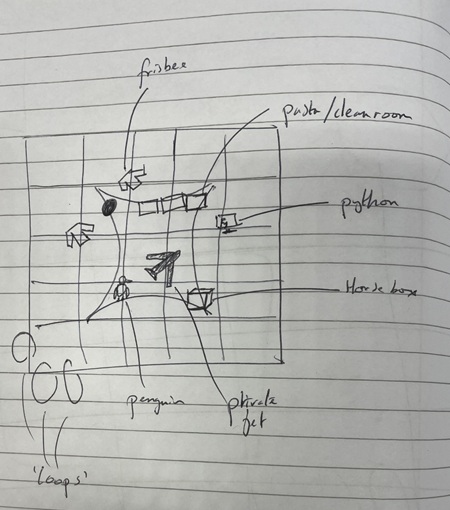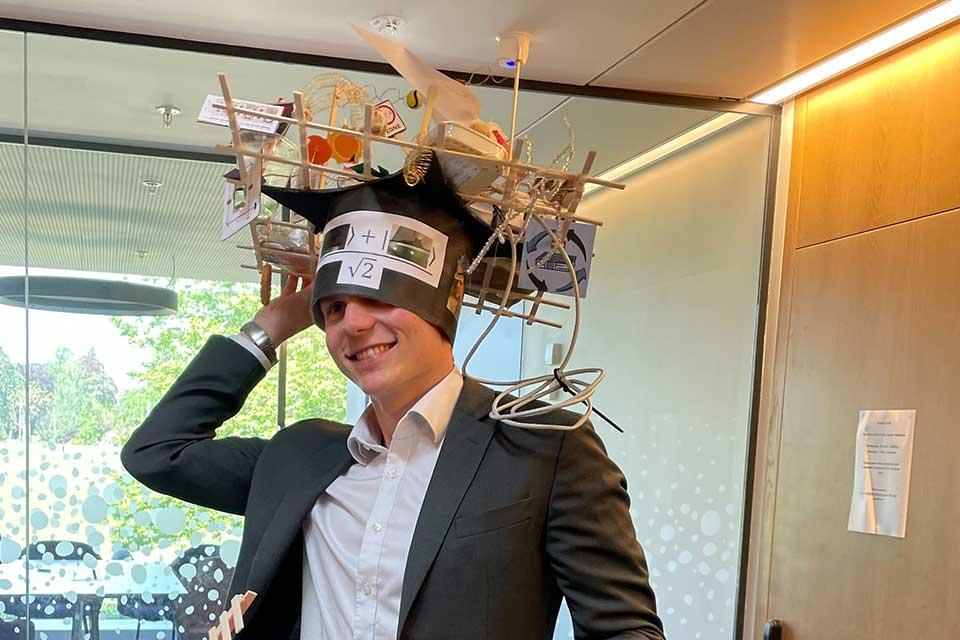Oana Bazavan on being a quantum physicist; here she shares an insight into the rollercoaster journey of gaining a doctorate as she explains the tradition of your postdoctoral DIY hat…
In research groups across the world, there’s a little-known celebratory tradition that marks the end of a PhD (DPhil, as it’s called at Oxford): the PhD hat. Not just any hat, but a custom, homemade creation that captures the twists and turns of a PhD journey. The tradition likely originated in Germany, but it has found its way into physics departments, biology labs, and even humanities research groups across the globe. In our Ion Trap Quantum Computing group at Oxford, the tradition is alive and well…
A PhD is often described as a marathon. You dive deep into a specific topic, often becoming the world expert in a tiny sliver of knowledge. The final test is the viva, a rigorous oral examination where you defend your work and answer questions about every decision you made. After all that? You’ve earned a celebration and a hat. These handmade hats are a playful spin on the traditional mortarboard – they capture not just the science that made it into the PhD thesis, but also the stories, stumbles, and spirit that didn’t.

A recent recipient in our group was Sebastian. Those who worked most closely with Sebastian took on the task of creating the hat and, because experimental physics is inherently collaborative, it is often the lab mates who know your journey best. Planning usually starts about a week before the viva, with a dedicated Slack or WhatsApp channel and a flurry of messages. The mission? Collect ideas that fall into three categories:
- Things related to their research
- Things they like
- Things they broke
From there, materials are gathered such as cardboard, black spray paint, a hot glue gun – and lots of imagination. The final construction usually happens the day before or even the morning of the viva in an atmosphere of delightful chaos.
Decoding the hat

The hat is presented at a small gathering after the viva when the examiners and the group come together to celebrate. So, having survived the viva, the recent graduate faces an even greater challenge: decoding the hat. In Sebastian’s case, here are just a few clues we added to the hat:
- Things related to his research: He worked on experimentally simulating models of particle interactions using a trapped ion quantum computer so the top of the hat features a wooden lattice, hinting at the lattice-like structures used in this kind of research.
- Things he likes: Pasta with chicken nuggets (yes, really).
- Things he broke: Before he even started his PhD, Sebastian managed to short-circuit the network.

A particular favourite detail of Sebastian’s? 'The 'cat state', a concept from quantum mechanics, reimagined here as a superposition of my pet cat Schnurrli being simultaneously awake and asleep.'
Celebrating the journey
For those of us in the lab, these hats are more than cardboard crafts. They are a chance to reflect, to laugh, and to celebrate the highs and lows of an intense and wonderful shared experience. Every object glued onto that hat tells a story, not just of science, but of friendship, teamwork, and growth.
'The hat was a symbol of the community I had formed during my time at Oxford, as well as the goofy and thoughtful nature of these individual relationships. I felt very acknowledged and valued. The thought that they put into it really made me feel warm and connected to everyone.
Kaitlin, who received her hat in March 2024
'The DPhil hat tradition was new to me, coming from graduate school in the US. I'm so glad it exists here.'
Kai
'I certainly didn't have a thesis hat, as it wasn't a tradition in the UK at all. In fact, the UK viva process was much more low-key than is typical elsewhere (eg France, where you have a public defence, and friends and family come along). It was especially low-key in my particular case as I was the last student on that project, and the research "group" consisted of just my supervisor and me! The hat tradition has made it into much more of an occasion now, which is nice. In our group, the "hat-making tradition" dates back to Norbert Linke (now a professor at Maryland/Duke): he had the idea of importing it from Germany where it seemed to be an established tradition.'
Professor David Lucas

